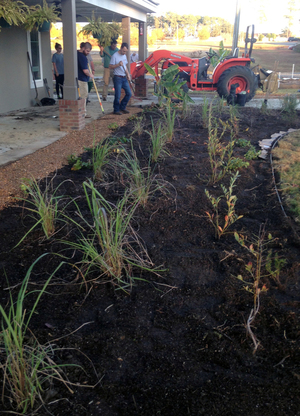Katherine Melcher and students will talk about
Designing Edible Landscapes
 at
South Georgia Growing Local 2017, January 21, 2017 in Valdosta, Georgia:
at
South Georgia Growing Local 2017, January 21, 2017 in Valdosta, Georgia:
In this talk, we will present the work of UGA Tifton students whose task was to implement an edible landscape design for the Future Farmstead, a net-zero energy residence on campus. Our design intent was to create a model sustainable landscape that could serve as an educational and inspirational site for home owners in the area.
The presentation will be divided into three parts:
- An overview of their landscape design process.
- Ideas for sustainable home landscapes that integrate water, soil, animal, plant, and human systems.
- Planting design recommendations and a selection of plants suitable for edible home landscapes in south Georgia.
Who should attend: Continue reading

